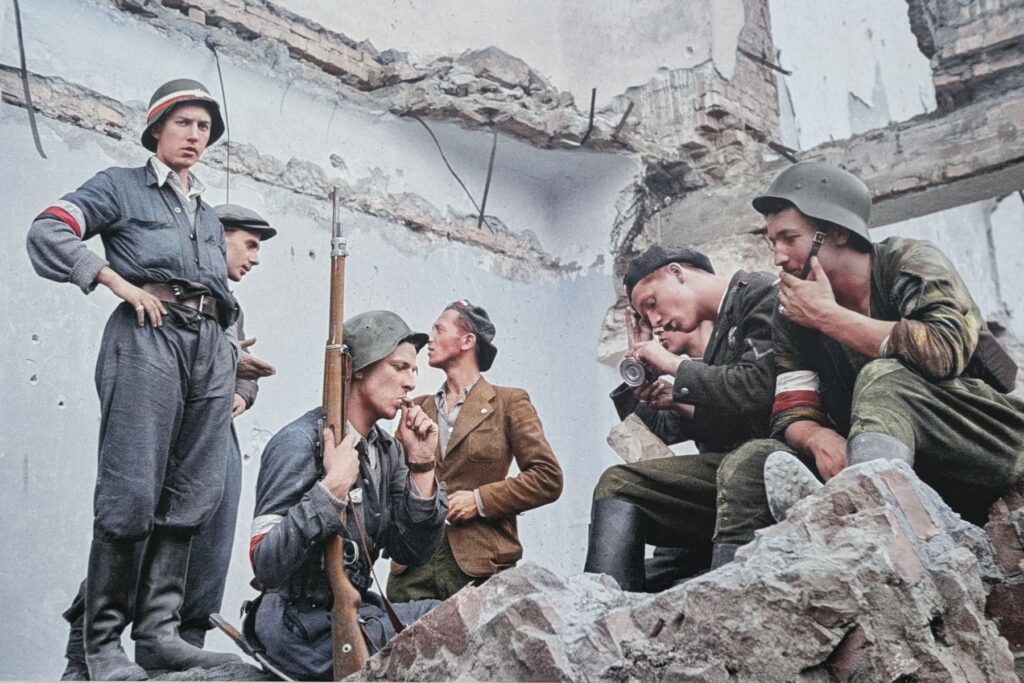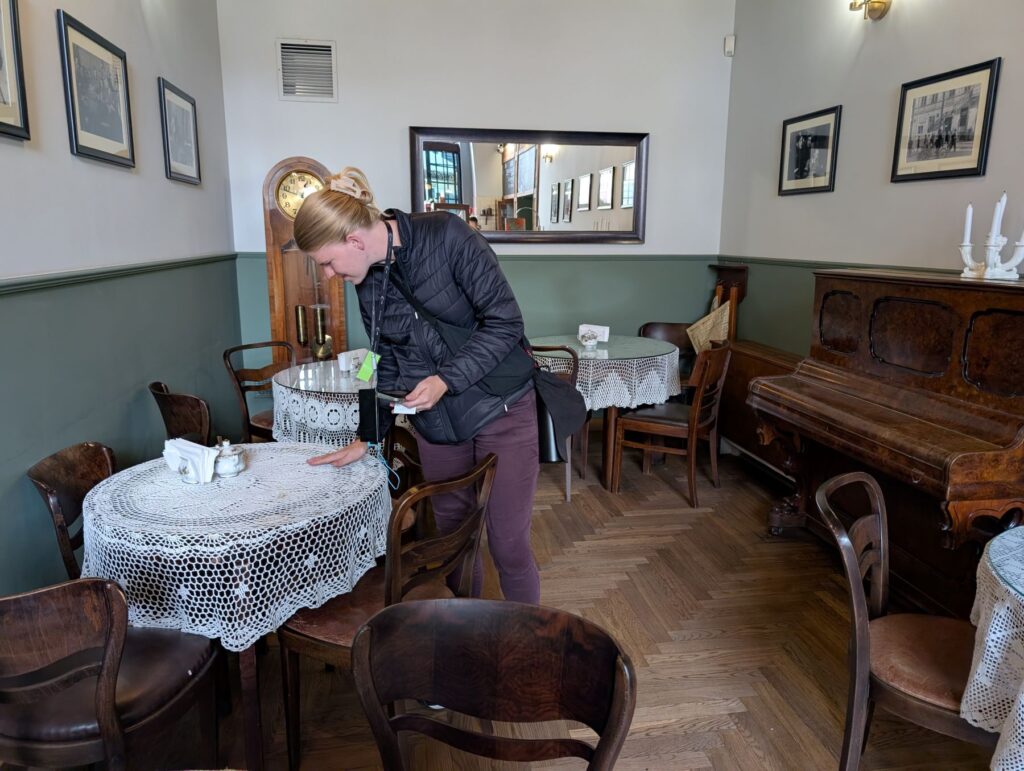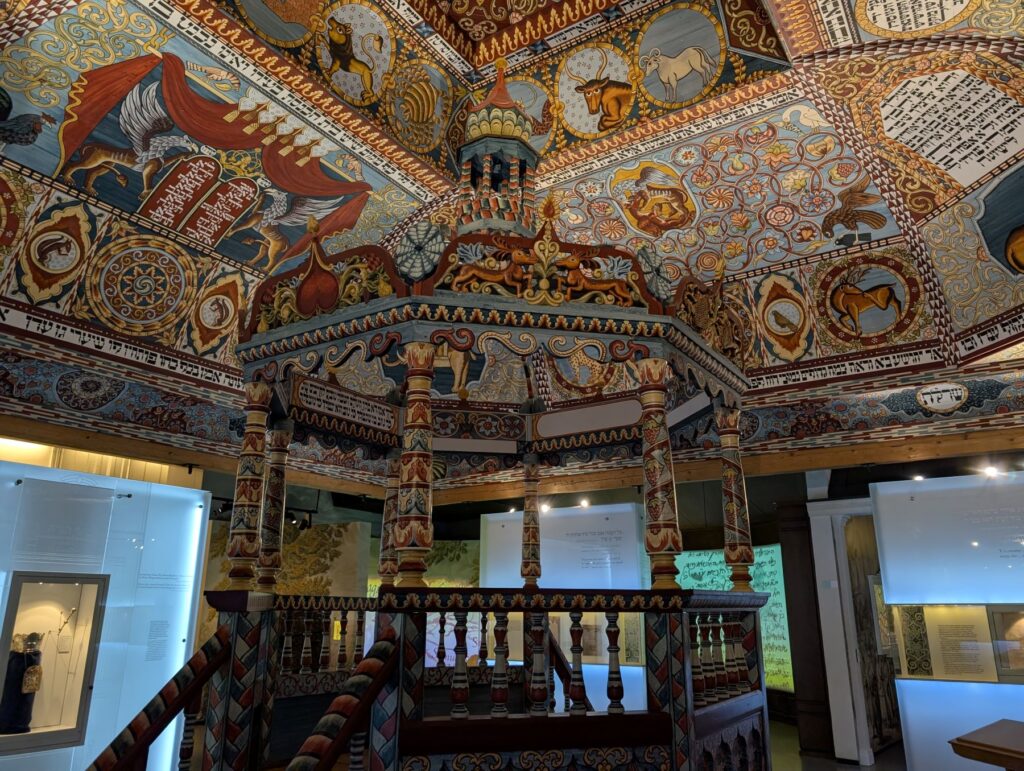Today, we took the opportunity to go visit a couple of museums on our last independent day. We started out with the Warsaw Uprising Museum followed by the POLIN Jewish Museum. Our evening was spent with Marek and Anya’s family, mostly playing board games. It’s been a great day!
The Warsaw Uprising
One of the great lesser-known battles of WWII is the Warsaw Uprising. For context, WWII kicked off with Germany invading Poland. Around two weeks later, the Soviet Union also invaded Poland from the east. The two great dictatorships split up the territory until their war two years later. Towards the end of the war, the Soviet army was pushing the Germans back to their own borders. When they reached the Polish capitol of Warsaw, the people of Warsaw rose up to fight back against the Germans. They expected the Soviet Red Army to come assist. Sadly, the Soviets sat back and watched. Once the fighting was over, the Soviets moved in and arrested all of the Polish freedom fighters so that they could subjugate the city themselves.
Although it’s a bit of a tragic story, it’s also a hopeful one. For two months, the oppressed Polish people of Warsaw held off the German army. It’s a story about hope, patriotism, and the will of a people group to fight for freedom.

The museum did a good job of presenting the story of the fight in an interesting way. It was a highly interactive museum. I learned a lot about a battle that I knew very little of before. A couple of quick facts: the rebels fought with whatever they could find. Sometimes it was British guns, sometimes German, sometimes simple clubs. Their whole operation was a bit of a hodgepodge. It makes the whole thing more inspirational. Another interesting thing was how the museum portrayed the Soviets. After the war, the country of Poland became a communist puppet state. The Polish very much saw the Soviets as a threat equal to Germany. Despite the uprising having little effect on the freedom of the nation for the following decades, surviving participants still viewed the battle as an important event that finally satisfied the years-long desire to do something about their situation.
Even Valerie was able to find something she liked at the museum. Halfway through the tour, there was a small, 1940s-style cafe that had crocheted tablecloths. I think that was Valerie’s favorite “exhibit”.

Warsaw Ghetto
After the museum, we took a long trip over to look at a brick wall. The Warsaw Ghetto is one of the most famous symbols of the Holocaust. As the Germans gradually rounded up Jews before murdering them, one of the first steps was to gather them all in individual areas of cities, known as ghettos. The Warsaw Ghetto was the largest of all. At its peak, over 450,000 Jews were confined to an area less than 2 square miles. Most of the ghetto was destroyed when the Germans leveled it, but we went to see one section of the wall still standing.
Jewish Museum
Our last museum of this trip was the POLIN Jewish Museum that tells the story of the Jewish population in Poland for the last thousand years. If you’re like me, that may not sound like the most interesting thing to spend hours learning about in a museum. However, it was one of the coolest museums I’ve seen. The whole tour was lead by an extremely well-made audioguide that walked you through exhibits imitating various aspects of Jewish life, culture, and history. There were rooms like a Bema where scripture is read, a typical home in the 1500s, a train station that Jewish engineers would’ve helped build, and so much more. It was so cool that we didn’t even make it all the way through before closing.

It’s hard to convey how interesting the museum was, but I would honestly make a trip all the way back to Poland to see this museum again. I highly recommend it to anyone that even remotely enjoys museums. Seeing Poland is a huge plus.
Time with Marek and Anya
We spent the rest of the evening with our host family. For supper, they made us a really nice salad and spiced chicken. I wish I could ask for the recipes but spice names are kind of difficult to translate. There is one that we can replicate though! For dessert, Ania made us a recipe from her childhood. I’ll call it loaded strawberries. It was fresh strawberries from the farmer’s market covered in all-natural plain yogurt, a bit of vanilla yogurt, and homemade meringue. It was delicious.
After supper, we played a couple of board games. One of the great struggles of being a huge board game enthusiast is that every time I try a new one, I want to buy it. We learned how to play Dixit with the whole family. The game is kind of like Apples to Apples with pictures and you’re trying to figure out which card the clue giver played. It’s a great game for the kids to practice their English. We also played Kaskadia, an Alaska-themed terrain builder. We finished off the night with Polish Ticket to Ride. It’s fun to cross the ocean and play the same games with someone we hardly know! Some games really transcend the language barrier too, especially if you already know how to play them. It’s pretty cool.
Tomorrow
Tomorrow, Marek and Ania are going to take us around Warsaw to see some of the sights. We might go up in one of the towers, check out a perogies place, and see a couple of cathedrals. It’ll be fun to tour with some locals!